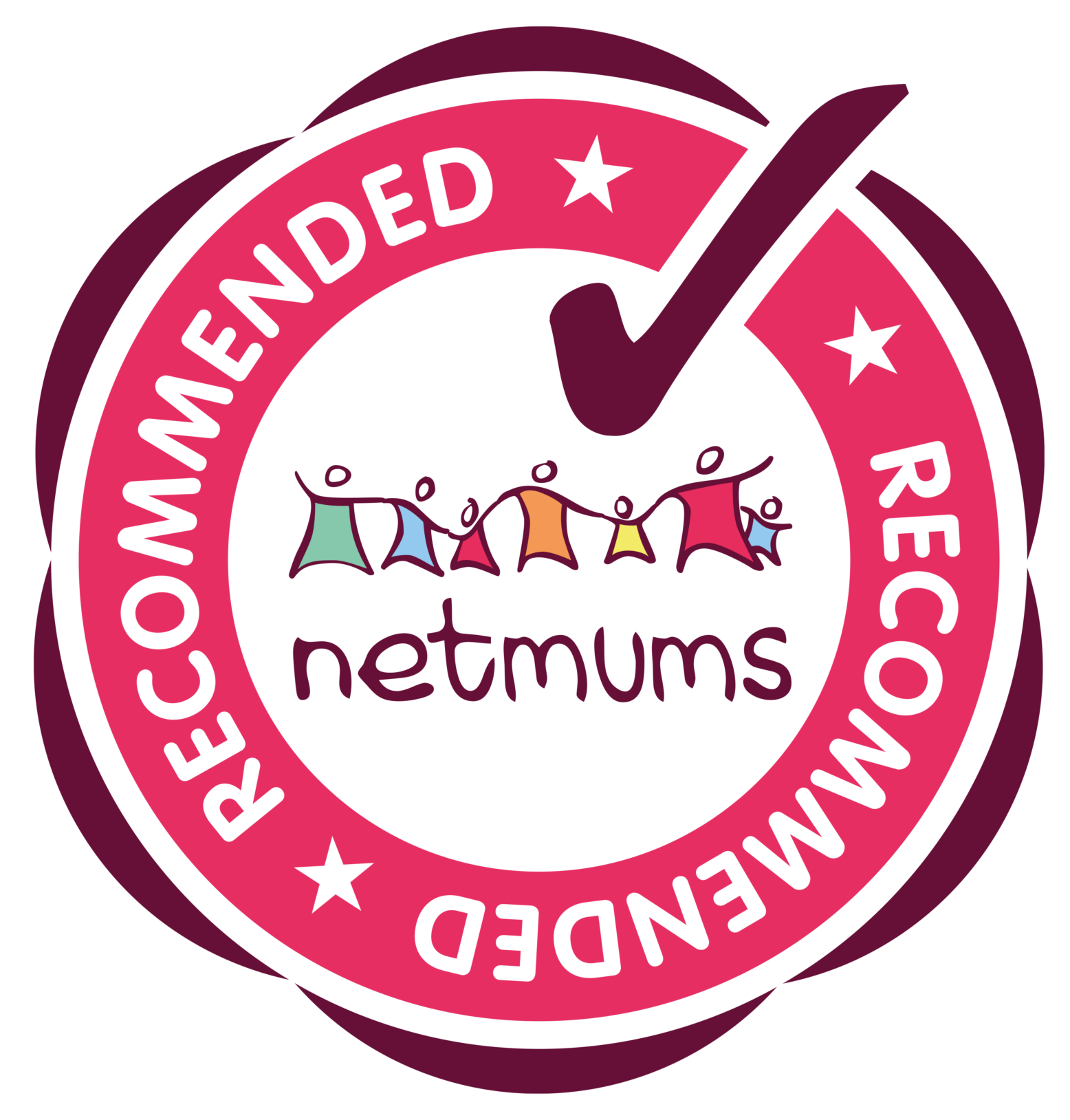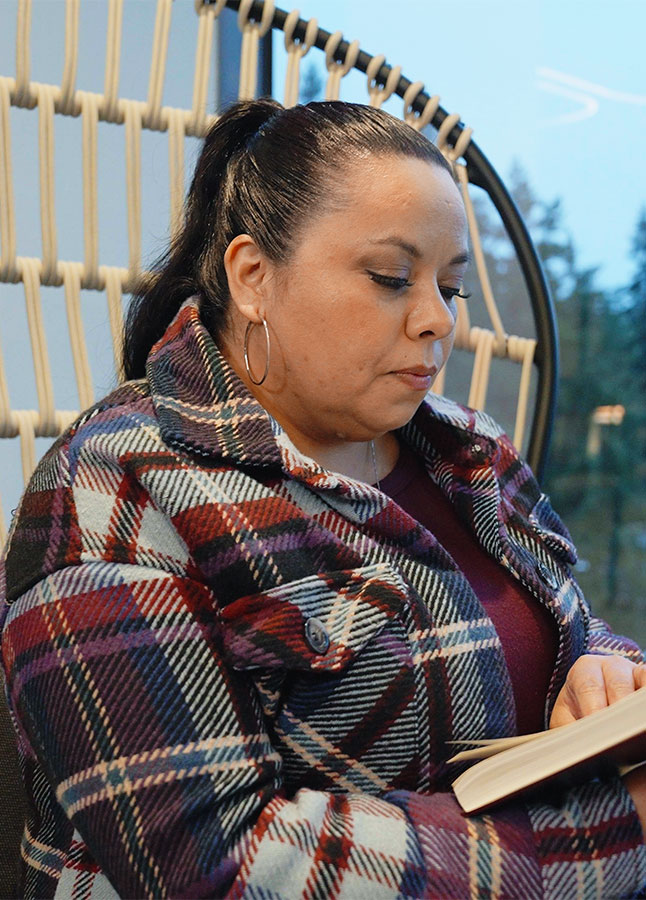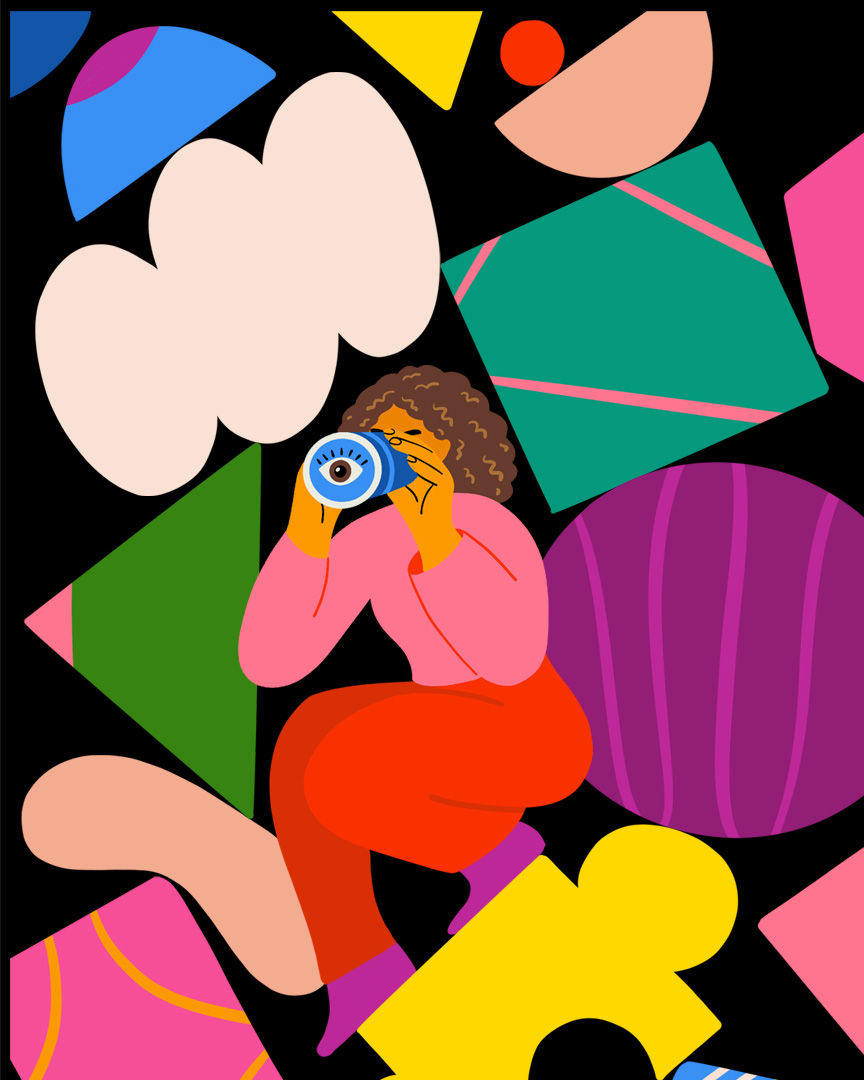It's Lit Teaching
High School English and TPT Seller Resources
- Creative Writing
- Teachers Pay Teachers Tips
- Shop My Teaching Resources!
- Sell on TPT

3 Simple Ideas for Your Creative Writing Final Exam

Creative Writing is usually a fun class that allows students to be more inventive and imaginative with their writing. How, then, do you possibly assess students’ growth at the end of the class? In this post, I will share three ways you can give students a Creative Writing final exam or summative assessment.
( Looking for more Creative Writing teaching tips? Try this post! )

Creative Writing Final Exam Idea #1: Portfolio
With a portfolio, students will determine which of their writing pieces from the class were their best. Then, they’ll assemble them together.
The pros of this final exam?
Theoretically, you won’t have to read any student writing for the first time. This will save you invaluable grading time during those last, precious few days of the year.
A portfolio will also force students to reflect on their own learning. Make them justify or explain each piece in their portfolio. This will show you what concepts students have learned and what skills they’re proud of having mastered.
This is also a final exam that should be difficult for students to fail. If they’ve done the work throughout the class, they’ll have plenty of pieces from which to choose. However, if they’ve slacked the entire class, it will obviously show in their final product–or lack thereof.

Engage your students in more creative writing!
Sign up and get five FREE Creative Writing journal prompts to use with your students!
Opt in to receive news and updates.
Keep an eye on your inbox for your FREE journal prompts!
Creative Writing Final Exam Idea #2: Literary Terms Test
Giving a test is certainly a final exam classic. For a Creative Writing class, you can give one that focuses specifically on literary terms.
Throughout your class, you’ve no doubt covered and reviewed many terms as you’ve read and written with your students. Now’s the time to see what stuck.

If you give a test online through a tool like Google Forms, it can be graded instantly.
You won’t have to waste much time reading–which you might not have if you’re required to give an exam on the last day of school.
If you choose to do a test as a final exam because you’re short on time, try to make as much of the test multiple choice (or matching, fill-in-the-blank, or other easy-to-grade question styles) as possible.
This Literary Terms test is entirely multiple-choice for quick and easy grading. 15 questions are simple multiple choice. 20 questions are matching. And 15 are questions based on excerpts from texts.
The entire test is editable, and it also comes with a Google Forms version which can grade itself.
If you’re only giving a final exam because it’s required of you, a simple test might be the way to go.

Creative Writing Final Exam Idea #3: A Larger Writing Assignment
This is for Creative Writing teachers who don’t have to give a final exam on a specific day or who want a general summative assessment. Having students tackle a larger writing assignment might be the best way to assess and challenge students.
This larger writing assignment could be almost anything and will depend on the kinds of writing you’ve done in class already.
Students will learn and practice more writing while completing a new writing project.
(This version will, however, take you longer to grade. If you can’t give your final exam until the last day of class or have to turn grades around quickly, avoid this.)
While your final writing project could be anything, I’ll present two that work well.
First, an Author Study can be used for poetry or short story writing. If you really want students to focus on literary terms, analyzing literature, and examining mentor texts, this is the project for you.
Learn more about structuring and teaching an author study project here .
Another classic writing project is the Fairy Tale Retelling Project . This project has some built-in differentiation and scaffolding making it a great choice if you have some struggling writers in class.
You can learn more about structuring and teaching a fairy tale retelling project here.
If you decide to go with a larger writing assignment as a final exam, start early. Students will probably need more time to finish than you think.
Also, give students an early due date. If you have to read entire short stories before the end of the year, you’ll want to make sure you have at least a week to do all of that grading.

For a Creative Writing final exam, be realistic about how much time your students will have to complete it and how much time you’ll have to grade it.
If you have to give a test and turn in grades within forty-eight hours of one another, a simple test will be your best option. Even if it’s not the most exciting assessment option for you or your students.
However, if you want students to end class engaged in something meaningful, a larger writing project might be the perfect capstone for your course.
Be realistic and make the choice based on your schedule.

11+ creative writing guide with 50 example topics and prompts
by Hayley | Nov 17, 2022 | Exams , Writing | 0 comments
The 11+ exam is a school entrance exam taken in the academic year that a child in the UK turns eleven.
These exams are highly competitive, with multiple students battling for each school place awarded.
The 11 plus exam isn’t ‘one thing’, it varies in its structure and composition across the country. A creative writing task is included in nearly all of the 11 plus exams, and parents are often confused about what’s being tested.
Don’t be fooled into thinking that the plot of your child’s writing task is important. It is not.
The real aim of the 11+ creative writing task is to showcase your child’s writing skills and techniques.
And that’s why preparation is so important.
This guide begins by answering all the FAQs that parents have about the 11+ creative writing task.
At the end of the article I give my best tips & strategies for preparing your child for the 11+ creative writing task , along with 50 fiction and non-fiction creative writing prompts from past papers you can use to help your child prepare. You’ll also want to check out my 11+ reading list , because great readers turn into great writers.
Do all 11+ exams include a writing task?
Not every 11+ exam includes a short story component, but many do. Usually 3 to 5 different prompts are given for the child to choose between and they are not always ‘creative’ (fiction) pieces. One or more non-fiction options might be given for children who prefer writing non-fiction to fiction.
Timings and marking vary from test to test. For example, the Kent 11+ Test gives students 10 minutes for planning followed by 30 minutes for writing. The Medway 11+ Test gives 60 minutes for writing with ‘space allowed’ on the answer booklet for planning.
Tasks vary too. In the Kent Test a handful of stimuli are given, whereas 11+ students in Essex are asked to produce two individually set paragraphs. The Consortium of Selective Schools in Essex (CCSE) includes 2 creative writing paragraphs inside a 60-minute English exam.
Throughout the UK each 11+ exam has a different set of timings and papers based around the same themes. Before launching into any exam preparation it is essential to know the content and timing of your child’s particular writing task.
However varied and different these writing tasks might seem, there is one key element that binds them.
The mark scheme.
Although we can lean on previous examples to assess how likely a short story or a non-fiction tasks will be set, it would be naïve to rely completely on the content of past papers. Contemporary 11+ exams are designed to be ‘tutor-proof’ – meaning that the exam boards like to be unpredictable.
In my online writing club for kids , we teach a different task each week (following a spiral learning structure based on 10 set tasks). One task per week is perfected as the student moves through the programme of content, and one-to-one expert feedback ensures progression. This equips our writing club members to ‘write effectively for a range of purposes’ as stated in the English schools’ teacher assessment framework.
This approach ensures that students approaching a highly competitive entrance exam will be confident of the mark scheme (and able to meet its demands) for any task set.
Will my child have a choice of prompts to write from or do they have to respond to a single prompt, without a choice?
This varies. In the Kent Test there are usually 5 options given. The purpose is to gather a writing sample from each child in case of a headteacher appeal. A range of options should allow every child to showcase what they can do.
In Essex, two prescriptive paragraphs are set as part of an hour-long English paper that includes comprehension and vocabulary work. In Essex, there is no option to choose the subject matter.
The Medway Test just offers a single prompt for a whole hour of writing. Sometimes it is a creative piece. Recently it was a marketing leaflet.
The framework for teaching writing in English schools demands that in order to ‘exceed expectations’ or better, achieve ‘greater depth’, students need to be confident writing for a multitude of different purposes.
In what circumstances is a child’s creative writing task assessed?
In Essex (east of the UK) the two prescriptive writing tasks are found inside the English exam paper. They are integral to the exam and are assessed as part of this.
In Medway (east Kent in the South East) the writing task is marked and given a raw score. This is then adjusted for age and double counted. Thus, the paper is crucial to a pass.
In the west of the county of Kent there is a different system. The Kent Test has a writing task that is only marked in appeal cases. If a child dips below the passmark their school is allowed to put together a ‘headteacher’s appeal’. At this point – before the score is communicated to the parent (and probably under cover of darkness) the writing sample is pulled out of a drawer and assessed.
I’ve been running 11+ tutor clubs for years. Usually about 1% of my students passed at headteacher’s appeal.
Since starting the writing club, however, the number of students passing at appeal has gone up considerably. In recent years it’s been more like 5% of students passing on the strength of their writing sample.
What are the examiners looking for when they’re marking a student’s creative writing?
In England, the government has set out a framework for marking creative writing. There are specific ‘pupil can’ statements to assess whether a student is ‘working towards the expected standard,’ ‘working at the expected standard’ or ‘working at greater depth’.
Members of the headteacher panel assessing the writing task are given a considerable number of samples to assess at one time. These expert teachers have a clear understanding of the framework for marking, but will not be considering or discussing every detail of the writing sample as you might expect.
Schools are provided with a report after the samples have been assessed. This is very brief indeed. Often it will simply say ‘lack of precise vocabulary’ or ‘confused paragraphing.’
So there is no mark scheme as such. They won’t be totting up your child’s score to see if they have reached a given target. They are on the panel because of their experience, and they have a short time to make an instant judgement.
Does handwriting matter?
Handwriting is assessed in primary schools. Thus it is an element of the assessment framework the panel uses as a basis for their decision.
If the exam is very soon, then don’t worry if your child is not producing immaculate, cursive handwriting. The focus should simply be on making it well-formed and legible. Every element of the assessment framework does not need to be met and legible writing will allow the panel to read the content with ease.
Improve presentation quickly by offering a smooth rollerball pen instead of a pencil. Focus on fixing individual letters and praising your child for any hint of effort. The two samples below are from the same boy a few months apart. Small changes have transformed the look and feel:

Sample 1: First piece of work when joining the writing club

Sample 2: This is the same boy’s improved presentation and content
How long should the short story be.
First, it is not a short story as such—it is a writing sample. Your child needs to showcase their skills but there are no extra marks for finishing (or marks deducted for a half-finished piece).
For a half hour task, you should prepare your child to produce up to 4 paragraphs of beautifully crafted work. Correct spelling and proper English grammar is just the beginning. Each paragraph should have a different purpose to showcase the breadth and depth of their ability. A longer – 60 minute – task might have 5 paragraphs but rushing is to be discouraged. Considered and interesting paragraphs are so valuable, a shorter piece would be scored more highly than a rushed and dull longer piece.
I speak from experience. A while ago now I was a marker for Key Stage 2 English SATs Papers (taken in Year 6 at 11 years old). Hundreds of scripts were deposited on my doorstep each morning by DHL. There was so much work for me to get through that I came to dread long, rambling creative pieces. Some children can write pages and pages of repetitive nothingness. Ever since then, I have looked for crafted quality and am wary of children judging their own success by the number of lines competed.
Take a look at the piece of writing below. It’s an excellent example of a well-crafted piece.
Each paragraph is short, but the writer is skilful.
He used rich and precisely chosen vocabulary, he’s broken the text into natural paragraphs, and in the second paragraph he is beginning to vary his sentence openings. There is a sense of control to the sentences – the sentence structure varies with shorter and longer examples to manage tension. It is exciting to read, with a clear awareness of his audience. Punctuation is accurate and appropriate.

11+ creative writing example story
How important is it to revise for a creative writing task.
It is important.
Every student should go into their 11+ writing task with a clear paragraph plan secured. As each paragraph has a separate purpose – to showcase a specific skill – the plan should reflect this. Built into the plan is a means of flexing it, to alter the order of the paragraphs if the task demands it. There’s no point having a Beginning – Middle – End approach, as there’s nothing useful there to guide the student to the mark scheme.
Beyond this, my own students have created 3 – 5 stories that fit the same tight plan. However, the setting, mood and action are all completely different. This way a bank of rich vocabulary has already been explored and a technique or two of their own that fits the piece beautifully. These can be drawn upon on the day to boost confidence and give a greater sense of depth and consideration to their timed sample.
Preparation, rather than revision in its classic form, is the best approach. Over time, even weeks or months before the exam itself, contrasting stories are written, improved upon, typed up and then tweaked further as better ideas come to mind. Each of these meets the demands of the mark scheme (paragraphing, varied sentence openings, rich vocabulary choices, considered imagery, punctuation to enhance meaning, development of mood etc).
To ensure your child can write confidently at and above the level expected of them, drop them into my weekly weekly online writing club for the 11+ age group . The club marking will transform their writing, and quickly.
What is the relationship between the English paper and the creative writing task?
Writing is usually marked separately from any comprehension or grammar exercises in your child’s particular 11+ exam. Each exam board (by area/school) adapts the arrangement to suit their needs. Some have a separate writing test, others build it in as an element of their English paper (usually alongside a comprehension, punctuation and spelling exercise).
Although there is no creative writing task in the ISEB Common Pre-test, those who are not offered an immediate place at their chosen English public school are often invited back to complete a writing task at a later date. Our ISEB Common Pre-test students join the writing club in the months before the exam, first to tidy up the detail and second to extend the content.
What if my child has a specific learning difficulty (dyslexia, ADD/ADHD, ASD)?
Most exam boards pride themselves on their inclusivity. They will expect you to have a formal report from a qualified professional at the point of registration for the test. This needs to be in place and the recommendations will be considered by a panel. If your child needs extra arrangements on the day they may be offered (it isn’t always the case). More importantly, if they drop below a pass on one or more papers you will have a strong case for appeal.
Children with a specific learning difficulty often struggle with low confidence in their work and low self-esteem. The preparations set out above, and a kids writing club membership will allow them to go into the exam feeling positive and empowered. If they don’t achieve a pass at first, the writing sample will add weight to their appeal.
Tips and strategies for writing a high-scoring creative writing paper
- Read widely for pleasure. Read aloud to your child if they are reluctant.
- Create a strong paragraph plan where each paragraph has a distinct purpose.
- Using the list of example questions below, discuss how each could be written in the form of your paragraph plan.
- Write 3-5 stories with contrasting settings and action – each one must follow your paragraph plan. Try to include examples of literary devices and figurative language (metaphor, simile) but avoid clichés.
- Tidy up your presentation. Write with a good rollerball pen on A4 lined paper with a printed margin. Cross out with a single horizontal line and banish doodling or scribbles.
- Join the writing club for a 20-minute Zoom task per week with no finishing off or homework. An expert English teacher will mark the work personally on video every Friday and your child’s writing will be quickly transformed.
Pressed for time? Here’s a paragraph plan to follow.
At Griffin Teaching we have an online writing club for students preparing for the 11 plus creative writing task . We’ve seen first-hand what a difference just one or two months of weekly practice can make.
That said, we know that a lot of people reading this page are up against a hard deadline with an 11+ exam date fast approaching.
If that’s you (or your child), what you need is a paragraph plan.
Here’s one tried-and-true paragraph plan that we teach in our clubs. Use this as you work your way through some of the example prompts below.
11+ creative writing paragraph plan
Paragraph 1—description.
Imagine standing in the location and describe what is above the main character, what is below their feet, what is to their left and right, and what is in the distance. Try to integrate frontend adverbials into this paragraph (frontend adverbials are words or phrases used at the beginning of a sentence to describe what follows—e.g. When the fog lifted, he saw… )
Paragraph 2—Conversation
Create two characters who have different roles (e.g. site manager and student, dog walker and lost man) and write a short dialogue between them. Use what we call the “sandwich layout,” where the first person says something and you describe what they are doing while they are saying it. Add in further descriptions (perhaps of the person’s clothing or expression) before starting a new line where the second character gives a simple answer and you provide details about what the second character is doing as they speak.
Paragraph 3—Change the mood
Write three to four sentences that change the mood of the writing sample from light to gloomy or foreboding. You could write about a change in the weather or a change in the lighting of the scene. Another approach is to mention how a character reacts to the change in mood, for example by pulling their coat collar up to their ears.
Paragraph 4—Shock your reader
A classic approach is to have your character die unexpectedly in the final sentence. Or maybe the ceiling falls?
11+ creative writing questions from real papers—fictional prompts
- The day the storm came
- The day the weather changed
- The snowstorm
- The rainy day
- A sunny day out
- A foggy (or misty) day
- A day trip to remember
- The first day
- The day everything changed
- The mountain
- The hillside
- The old house
- The balloon
- The old man
- The accident
- The unfamiliar sound
- A weekend away
- Moving house
- A family celebration
- An event you remember from when you were young
- An animal attack
- The school playground at night
- The lift pinged and the door opened. I could not believe what was inside…
- “Run!” he shouted as he thundered across the sand…
- It was getting late as I dug in my pocket for the key to the door. “Hurry up!” she shouted from inside.
- I know our back garden very well, but I was surprised how different it looked at midnight…
- The red button on the wall has a sign on it saying, ‘DO NOT TOUCH.’ My little sister leant forward and hit it hard with her hand. What happened next?
- Digging down into the soft earth, the spade hit something metal…
- Write a story which features the stopping of time.
- Write a story which features an unusual method of transport.
- The cry in the woods
- Write a story which features an escape
11+ creative writing questions from real papers—non-fiction prompts
- Write a thank you letter for a present you didn’t want.
- You are about to interview someone for a job. Write a list of questions you would like to ask the applicant.
- Write a letter to complain about the uniform at your school.
- Write a leaflet to advertise your home town.
- Write a thank you letter for a holiday you didn’t enjoy.
- Write a letter of complaint to the vet after an unfortunate incident in the waiting room.
- Write a set of instructions explaining how to make toast.
- Describe the room you are in.
- Describe a person who is important to you.
- Describe your pet or an animal you know well.
11 Plus creative writing tips and examples

Preparing for your 11 Plus creative writing exam doesn’t have to be a worry. We help you here with 11 Plus creative writing tips and examples to prepare you for the exam. We're here to help you practice and improve your writing techniques and creative writing skills so you’re ready for your 11 Plus exams .
Creative writing can be really fun – you can explore something you really want to and write about something that means a lot to you. Although, we know it can be a little bit worrying for some students that don’t enjoy writing as much or don’t feel confident in their writing skills.
So, ahead of your 11 Plus exams we want to help you prepare with these 11 Plus creative writing tips and strategies.
What Is 11 Plus Creative Writing?
The 11 Plus creative writing exam assesses a child’s ability to compose structured and engaging pieces of written work. It’s designed to evaluate a student’s fluency, imaginative capabilities, grammar, punctuation and overall ability to write creatively.
What does the 11 Plus creative writing exam include?
The 11 Plus creative writing exam is usually 25-30 minutes and could involve the continuation of a storyline that you’ll be provided with. Alternatively you might be asked to write a short piece of your own in response to a visual stimulus – this could be describing a character or writing something from their perspective, like a diary entry.
Here are some the potential writing tasks you could be given for your 11 Plus creative writing exam:
Descriptive task – continuing on a short story that you’ll be provided with, or describing a place or situation that your character finds themselves in.
Persuasive task – you could be asked to write a letter or an article with the goal to persuade the reader to feel or act in a certain way after reading it by using emotive language.
Narrative task – this would usually involve writing your own short story.
Expository task – this could involve writing an article or set of instructions designed to inform the reader how to go about doing something properly.
What are the 11 Plus creative writing topics?
Prior to starting your creative writing piece, you’ll need to have a topic. It’s important that the topic remains at the centre of everything you’re writing, as it will shape the direction of the story and the characters
You can think of a topic as a theme for your story. This can be really simple, as a simple theme will really help write a story in your own way.
For your 11 plus creative writing exam, you’ll likely be presented with a topic that you then have to write about. Often these topics will have you writing about:
Being lost or scared, capturing the feeling of being alone and writing a story about overcoming it.
Doing something exciting or achieving something impressive, the best day of your life so far.
A holiday or an adventure
Travelling to the city or countryside and what you might experience there.
Writing a short story on each of the topics above can be a great way to familiarise yourself with creative writing.
What do examiners look for in creative writing?
Successfully passing your creative writing 11 Plus creative writing exam is a lot less daunting if you know what the examiners are looking for in your creative writing.
Unlike other exams, it can be difficult to prepare the exact answers. It’s not like a sum in maths, where there’s only one correct answer after your working out. That doesn’t mean there aren’t specific things that examiners are looking for. Let’s take a look at those:
A well planned piece of writing
Strong creativity and good imagination
A fluent writing style
Good and correct use of punctuation
Good use of English grammar
Complex sentences that are broken in an easy-to-read way with commas
Good spelling
Good and exciting vocabulary
Neat, easy-to-read handwriting
You can use those things as a checklist for your creative writing. When you write practice pieces, read them back and see if you can check off everything on the list of things that examiners are looking for. This will not only highlight areas needing improvement but will also act as a confidence-building tool.
11 Plus creative writing marking scheme
Your creative writing task will be worth 50% of your English 11 plus exam paper. So, you’ll want to make sure you’re well prepared!
Part of preparing for the creative writing task is ensuring you know how the exam will be marked. Here’s what your examiner will look at when they mark your work:
The plot – you need to write a piece that’s got an engaging plot, but more importantly it needs to follow a strong beginning, middle and end structure. We’ll be getting more detail about that further on. Make sure you plan your story to ensure you have a well-structured and easy-to-follow plot.
Vocabulary – Make sure you’re using a wide range of adjectives, nouns and adverbs. Rather than describing everything the same way, come up with some other engaging ways to write something. Use a good amount of complex words that you normally wouldn’t use (and make sure you understand what they mean so you use them correctly).
Writing devices – no, your examiner isn’t looking at what pen you used to write the exam. Writing devices refer to things like metaphors, similes, tension building short sentences, alliteration and irony. Try sentences like “he was as fast as a runaway train,” for a simile example. See if you can write a few sentences that each use a different writing device to practice.
Grammar – now is a good time to start practising your grammar skills. Make sure you’re using commas correctly when you write long sentences, and that you format your character dialogue properly. There are a few common grammar mistakes that may catch you out, so keep practising.
Spelling – While avoiding spelling mistakes is good, to get great marks on your exams you’ll want to use complicated words and spell them correctly. It might be tempting to avoid complicated words if you’re not sure how to spell them but it’s actually not a bad idea to use one or two complicated words and spell them so they’re recognisable than to use no complicated words at all.
11 Plus creative writing tips and techniques
Every great writer has one thing in common – writing techniques! Everyone can develop their creative writing skills by practising these creative writing tasks.
Getting creative
If you want to write a story this should be your starting point! Have a good think about the topic for your story and the character you’ll be writing about. Take a minute to sit back, close your eyes and think about the world of your story. Can you see it?
If you can visualise the world of your story, then you’ve got a good idea to work with! Get creative about the story and think about directions that it can go, and the characters you can work with.
Planning and structure
Once you’ve got your theme in place you need to have a think about the direction of your story. Think about how your story starts, how you want it to end and then think about how you want your main character to get there.
Remember the classic story structure of beginning, middle and end:
Use the beginning of your story to introduce your character, where they are and maybe one of two of their friends. Maybe even try to set them a goal at this point, what’s something they really, really want?
Introduce the middle of your story with a problem or an obstacle for your main character to overcome. This is going to be the longest section of your story, so make sure you don’t spend too long with the opening! Think about how your character would overcome the problem you’ve introduced for them.
In the end your main character overcomes the problem that you introduced for them. Think about what they would feel, the relief they’d experience and how you can sum that up in a paragraph or two.
There are lots of different ways to write a story, but following the beginning, middle and end structure like this will really help you plan. Try to just write a few short sentences from the beginning, middle and end, then expand it out from there.
If you need more inspiration to improve your writing skills, why not see David Walliam’s top ten writing tips ?
Creative writing examples: using the senses
Remember – writing descriptively helps your ideas to really come across in what you’re writing. The person reading your creative writing piece can’t read your mind!
A great way to really set a scene in your creative writing is to use the senses:
Sight – what can your character see? Describe how the scene around them looks, and be sure to use some good adjectives.
Sound – can your character hear anything? Even if your character can’t hear anything, that can sometimes be a great way to set a scene. Or maybe your character can hear lots of noise? Either way, make sure the reader knows that.
Smell – what does the place your character’s in smell like? You can make a disgusting, murky bog seem even filthier by describing how smelly it is to the reader. We all react strongly to smells, good or bad, so make sure you’re describing them to your reader.
Touch – what can your character feel? Are they sitting on a really soft sofa? Is the cat they’re stroking extra fluffy? Describe everything your character feels!
Taste – is your character tasting anything? Of course, if your character’s eating you need to describe it. How sweet are the sweets they’re eating? How bitter is the medicine they had to take? You could even get creative and describe a smell so bad that your character can almost taste it!
Get creative when you write about senses. You don’t have to cover every sense in order, you can mix things up in a paragraph or two, and sometimes you only need to cover two or three senses in a particular scene. Make sure you’re always telling your audience what your character is experiencing so the reader can put themselves in your character’s shoes. Utilising this technique ensures the reader engages with your creative writing piece.
Fluent writing
Practice makes perfect when it comes to fluent writing. To practice fluent writing, set yourself a creative writing task as if you were taking your 11 Plus creative writing test.
Try keeping the stories short. Just a few paragraphs so you can do a few attempts. When you’re finished, read them back to yourself out loud. See if the sentences are easy to read out loud. If they’re not, it might be good to rewrite them in a way that makes them easier to say. Try doing this out loud too, rephrase the sentence so it means the same thing but is easier to say.
Reading out loud is not something you will be doing at the exam, so practicing your fluency at home is the key. Never be scared to do a few practice stories before your 11 Plus creative writing exam.
Proofreading Your Creative Writing
Finally, once you’ve finished writing and you’re happy with how fluent your piece sounds you’ve got to proofread it! That means checking your grammar, your punctuation and spelling.
Make sure you’ve only used capital letters where they need to be used – the start of sentences and the names of people and places.
Make sure you’ve used quotation marks correctly – start a new paragraph for when a character starts speaking, open with a quotation mark and then write what they said before closing with a quotation mark. Make sure you carry on writing after they’ve finished speaking with a new paragraph!
Have you checked the tenses? Make sure you’re not mixing up past, present and future tenses !
Have you used enough punctuation? Make sure all your sentences end with full stops, but also that questions end with a question mark. Space out long sentences with a well-placed comma and make sure if a character says something loudly or is surprised that you’re using exclamation marks.
Check your spelling! Are there any words you struggle with? Go back and check them to make sure they look right. If you’re really struggling to spell a word, maybe use a different one for your creative writing piece – lots of writers do this! If you do this a lot, then it might be worth doing some spelling practice.
How do I prepare for creative writing?
When it comes to 11 Plus creative writing exams it’s difficult to find something specific to revise – unlike exams in maths or English spelling, creative writing exams don’t have a right or wrong answer. So, don’t get overwhelmed by reading countless creative writing books.
The best way to prepare for a creative writing test is to practice all the key points we mentioned above. Set yourself some small creative writing tasks, practice your spelling and get some help fromyour teachers. You could also ask your parents or guardians about tuition to help you prepare for your creative writing .
We also have some creative writing book suggestions and worksheets that could help you prepare.
11 Plus creative writing examples books
If you’re looking for some books to help you prepare for your 11 Plus creative writing exam or want to find some creative writing examples, here are some of our favourites:
11+ Essentials Creative Writing Examples Book 1 (First Past the Post)
11+ Essentials Creative Writing Examples Book 2 (First Past the Post)
Bond 11+: English Focus on Writing: 9-11 years
RSL Creative Writing, Book 1: KS2, KS3, 11 Plus & 13 Plus – Workbook For Ages 9 Upwards
11+ Creative Writing
Remember to always ask a parent or guardian before buying anything online.
11 Plus creative writing tasks and worksheets
Here are some of our own worksheets that’ll help you prepare and improve your creative writing skills:
Creating characters
Creating dilemmas
Creating settings
My favourite author
Try an 11 plus creative writing tutor
If you’re worried about your 11 plus creative writing exam, that’s okay. There are numerous ways you can prepare without getting yourself overwhelmed. We’ve already covered how practice makes perfect when it comes to writing, so creative writing courses could be a great way for you to improve your confidence.
11 Plus tuition will also help with your creative writing. Explore Learning’s expert tutors can help you work on your story planning and structure, grammar, writing fluency and vocabulary.
Don’t let yourself get overwhelmed about your 11 Plus creative writing task, we’re here to help you do your best.
Tuition from £175 / month
Start your 11 Plus and Entrance Exam journey today.
Cancel anytime
No joining fee
In centre or online
Memberships to suit you
11 Plus creative writing FAQs
How to prepare for 11 plus creative writing.
Prepare by understanding the 11 Plus creative writing requirements. Engage in regular practice on various topics like adventures, challenges and feelings. Focus on grammar, punctuation, fluency, spelling and vocabulary. Always proofread and consider getting feedback.
Is there creative writing in the 11 Plus exam?
The 11 Plus exam may include a creative writing component, often lasting 25-30 minutes, where a student demonstrates their narrative and language skills.
What are the different types of creative writing 11+?
The 11 Plus creative writing includes descriptive, persuasive and narrative tasks. Studentsmay be asked to craft or add to stories, describe scenarios, write persuasive letters or informative pieces.
How do I study for a creative writing exam?
Study by practising various creative writing tasks regularly. Focus on language proficiency, structure your narratives and proofread. For tailoredsupport, consider 11 Plus tuition .

Your nearest centres
Sorry, we don't have any centres within {{distance}} miles, explore learning online tuition.
We also offer online tuition to flexibly fit into your family’s life.
Results from outside {{distance}} miles
Please select a centre.
Showing {{count}} closest to '{{postcode}}'
{{address}}
{{distance}} miles
Can't find a centre near you?
Search again.
OCR homepage
Administration
- Active Results
- Interchange
- Submit for Assessment
- Teach Cambridge
- ExamBuilder
- Online Support Centre
Main navigation
Creative writing in english in exams and in the classroom.
Hints and Tips - 7 minute read
Isobel Woodger, OCR English Subject Advisor

Reading as a writer, writing as a reader
Our approach tries to marry students’ experiences as readers and writers. This is why the creative component for Language and Literature is called “Reading as a writer, writing as a reader”, to emphasise that students should see elements they’ve explored in their texts not just as inspiration, but as a set of tools they can use in their work.
Equally, as I saw during a recent English and Media Centre (EMC) course on teaching The Bloody Chamber , creative writing can create powerful, conceptual responses to texts as well as deepen understanding of the author’s process.
What is our approach to creative writing tasks?
Crucial to our approach, at all levels, is the dual focus on narrative and choice. We believe in offering students a choice in which narrative they are asked to create to enable better, more authentic responses. It’s important that students feel they are involved in the assessment as opposed to simply sitting it.
Additionally, we focus on narrative over pure descriptive writing as we think this helps generate truly creative, imaginative work. In Component 2 of our GCSE English Language course , students are asked to write a creative response to one of two prompts, like those below from the 2018 June series .
One is narrative based, e.g. giving a title as a prompt for a story; the other is more of a personal, reflective response, giving a scenario to develop.
From June 2018, GCSE English Language Component 2:
This links neatly to the tasks we set in A Level Language & Literature course which we co-developed with EMC. In the second part of Component 3, students choose one of two narrative prompts like these from the 2018 June series:
Students should write approximately 500 words of an opening to a narrative, clearly using some of the bullet points provided. They are, in the next question, asked to write a commentary on their work.
What are our examiners saying?
Our examiners are aware that writing creatively on demand is a complex brief to fulfil. We also know that what we respond to as readers is often the author’s control: how they guide our responses to places, people and topics, as well as play with our assumptions and expectations.
At GCSE, the mark scheme talks about Level 6 students adapting the form of their writing “to position the reader” as a way to demonstrate “sophisticated control of purpose and effect” alongside “skilfully control[ing] overall structure.” Ultimately, whatever their level, students should aim to write a piece that demonstrates a sense of narrative control over its style and is structured to direct their reader’s response.
Without taking the time to plan a response, it can be hard to demonstrate this control. As the June 2018 GCSE Examiners’ Report says, “The best work has been carefully planned and builds to a clear and effective conclusion.” Knowing what and how they want to write offers students more control over their work and gives them greater scope for inventiveness.
A crucial way to approach students’ ability to plan is to build their understanding of structural choices. Being able to choose what narrative voice they wish to use, where the story should open and close, how the story ought to progress – these are structural decisions that can enable students to write more imaginatively, without a dependence solely on vocabulary extension. Naturally, exposing students to a wide range of texts of different kinds is what aids this understanding.
Some consideration of time can be a great way for students to be more formally and structurally inventive, as outlined in the same report: “The use of flashback, flash forward, starting at the linear conclusion and working back to the beginning […] can all bring a great deal of creative originality to straightforward or even rather mundane content.”
Creative writing strategies for the classroom and the exam:
Use analogies both as instructions and models. For example, ask students to think of perspective as being like directing a film scene, where your decisions about where the camera should be and who it should focus on can change how the audience feels.
Don’t be afraid to use creative writing as tool for understanding other texts or ideas. Teaching students to write creatively only in response to examination prompts isn’t the way to broaden their ideas. Instead, use creative writing as a way for them to respond to a Literature text; use it as a way for them to express their thoughts about a concept like inequality, or relationships.
Using style models is underrated. Get students to write in the style of a range of authors, so they can learn from the inside out how voice is constructed in different ways depending on the writer.
Exploratory writing could form part of the planning process. Often students think planning means coming up with a list straight away. It’s worth asking students to write in an exploratory way about a text or a task before getting them to consider which of those ideas might form a road map for their own writing.
Effective description moves beyond modifiers. Adjectives and adverbs are important but should be used with judgement. Having a wider range of descriptive, precise verbs will give students more control over their work.
Plan to write something ‘real’. This isn’t a plea for realist fiction, but rather, responses that have a sense of emotional reality. This can help ground writing, giving it depth and direction. This can be easy to miss when trying to plan for something dramatic or surprising.
In short, we want students to write pieces that demonstrate control and consideration, which show they can choose words with care to craft a planned narrative. We think the more students are aware that their experiences as readers can be used or adapted for themselves in their own work, the wider range of tools students have at their fingertips.
Stay connected
Have you got any creative writing strategies you’d like to share? Or perhaps there’s a particular area of the subject you’d like us to talk about. In either case, do submit your comments below or email us at [email protected] . You can also sign up to receive email updates or follow us on Twitter at @OCR_English .
About the author
Isobel joined OCR as a member of the English subject team, with particular responsibility for A and AS Level English Literature and A and AS Level English Language and Literature (EMC).
She previously worked as a classroom teacher in a co-educational state secondary school, with three years as second-in-charge in English with responsibility for Key Stage 5. In addition to teaching all age groups from Key Stage 3 to 5, Isobel worked with the University of Cambridge’s Faculty of Education as a mentor to PGCE trainees. Prior to this, she studied for an MA in film, television and screen media with Birkbeck College, University of London while working as a learning support assistant at a large state comprehensive school.
By the same author
- Clarifying context in GCSE and A Level English Literature
- English: Tips and tricks for tackling the A Level Literature NEA
- English ‘subject terminology’ - precision or complication? How might it help rather than hinder?
- Writing Activities
105 Creative Writing Exercises To Get You Writing Again
You know that feeling when you just don’t feel like writing? Sometimes you can’t even get a word down on paper. It’s the most frustrating thing ever to a writer, especially when you’re working towards a deadline. The good news is that we have a list of 105 creative writing exercises to help you get motivated and start writing again!
What are creative writing exercises?
Creative writing exercises are short writing activities (normally around 10 minutes) designed to get you writing. The goal of these exercises is to give you the motivation to put words onto a blank paper. These words don’t need to be logical or meaningful, neither do they need to be grammatically correct or spelt correctly. The whole idea is to just get you writing something, anything. The end result of these quick creative writing exercises is normally a series of notes, bullet points or ramblings that you can, later on, use as inspiration for a bigger piece of writing such as a story or a poem.
Good creative writing exercises are short, quick and easy to complete. You shouldn’t need to think too much about your style of writing or how imaginative your notes are. Just write anything that comes to mind, and you’ll be on the road to improving your creative writing skills and beating writer’s block .
Use the generator below to get a random creative writing exercise idea:
List of 105+ Creative Writing Exercises
Here are over 105 creative writing exercises to give your brain a workout and help those creative juices flow again:
- Set a timer for 60 seconds. Now write down as many words or phrases that come to mind at that moment.
- Pick any colour you like. Now start your sentence with this colour. For example, Orange, the colour of my favourite top.
- Open a book or dictionary on a random page. Pick a random word. You can close your eyes and slowly move your finger across the page. Now, write a paragraph with this random word in it. You can even use an online dictionary to get random words:

- Create your own alphabet picture book or list. It can be A to Z of animals, food, monsters or anything else you like!
- Using only the sense of smell, describe where you are right now.
- Take a snack break. While eating your snack write down the exact taste of that food. The goal of this creative writing exercise is to make your readers savour this food as well.
- Pick a random object in your room and write a short paragraph from its point of view. For example, how does your pencil feel? What if your lamp had feelings?
- Describe your dream house. Where would you live one day? Is it huge or tiny?
- Pick two different TV shows, movies or books that you like. Now swap the main character. What if Supergirl was in Twilight? What if SpongeBob SquarePants was in The Flash? Write a short scene using this character swap as inspiration.
- What’s your favourite video game? Write at least 10 tips for playing this game.
- Pick your favourite hobby or sport. Now pretend an alien has just landed on Earth and you need to teach it this hobby or sport. Write at least ten tips on how you would teach this alien.
- Use a random image generator and write a paragraph about the first picture you see.

- Write a letter to your favourite celebrity or character. What inspires you most about them? Can you think of a memorable moment where this person’s life affected yours? We have this helpful guide on writing a letter to your best friend for extra inspiration.
- Write down at least 10 benefits of writing. This can help motivate you and beat writer’s block.
- Complete this sentence in 10 different ways: Patrick waited for the school bus and…
- Pick up a random book from your bookshelf and go to page 9. Find the ninth sentence on that page. Use this sentence as a story starter.
- Create a character profile based on all the traits that you hate. It might help to list down all the traits first and then work on describing the character.
- What is the scariest or most dangerous situation you have ever been in? Why was this situation scary? How did you cope at that moment?
- Pretend that you’re a chat show host and you’re interviewing your favourite celebrity. Write down the script for this conversation.
- Using extreme detail, write down what you have been doing for the past one hour today. Think about your thoughts, feelings and actions during this time.
- Make a list of potential character names for your next story. You can use a fantasy name generator to help you.
- Describe a futuristic setting. What do you think the world would look like in 100 years time?
- Think about a recent argument you had with someone. Would you change anything about it? How would you resolve an argument in the future?
- Describe a fantasy world. What kind of creatures live in this world? What is the climate like? What everyday challenges would a typical citizen of this world face? You can use this fantasy world name generator for inspiration.
- At the flip of a switch, you turn into a dragon. What kind of dragon would you be? Describe your appearance, special abilities, likes and dislikes. You can use a dragon name generator to give yourself a cool dragon name.
- Pick your favourite book or a famous story. Now change the point of view. For example, you could rewrite the fairytale , Cinderella. This time around, Prince Charming could be the main character. What do you think Prince Charming was doing, while Cinderella was cleaning the floors and getting ready for the ball?
- Pick a random writing prompt and use it to write a short story. Check out this collection of over 300 writing prompts for kids to inspire you.
- Write a shopping list for a famous character in history. Imagine if you were Albert Einstein’s assistant, what kind of things would he shop for on a weekly basis?
- Create a fake advertisement poster for a random object that is near you right now. Your goal is to convince the reader to buy this object from you.
- What is the worst (or most annoying) sound that you can imagine? Describe this sound in great detail, so your reader can understand the pain you feel when hearing this sound.
- What is your favourite song at the moment? Pick one line from this song and describe a moment in your life that relates to this line.
- You’re hosting an imaginary dinner party at your house. Create a list of people you would invite, and some party invites. Think about the theme of the dinner party, the food you will serve and entertainment for the evening.
- You are waiting to see your dentist in the waiting room. Write down every thought you are having at this moment in time.
- Make a list of your greatest fears. Try to think of at least three fears. Now write a short story about a character who is forced to confront one of these fears.
- Create a ‘Wanted’ poster for a famous villain of your choice. Think about the crimes they have committed, and the reward you will give for having them caught.
- Imagine you are a journalist for the ‘Imagine Forest Times’ newspaper. Your task is to get an exclusive interview with the most famous villain of all time. Pick a villain of your choice and interview them for your newspaper article. What questions would you ask them, and what would their responses be?
- In a school playground, you see the school bully hurting a new kid. Write three short stories, one from each perspective in this scenario (The bully, the witness and the kid getting bullied).
- You just won $10 million dollars. What would you spend this money on?
- Pick a random animal, and research at least five interesting facts about this animal. Write a short story centred around one of these interesting facts.
- Pick a global issue that you are passionate about. This could be climate change, black lives matters, women’s rights etc. Now create a campaign poster for this global issue.
- Write an acrostic poem about an object near you right now (or even your own name). You could use a poetry idea generator to inspire you.
- Imagine you are the head chef of a 5-star restaurant. Recently the business has slowed down. Your task is to come up with a brand-new menu to excite customers. Watch this video prompt on YouTube to inspire you.
- What is your favourite food of all time? Imagine if this piece of food was alive, what would it say to you?
- If life was one big musical, what would you be singing about right now? Write the lyrics of your song.
- Create and describe the most ultimate villain of all time. What would their traits be? What would their past look like? Will they have any positive traits?
- Complete this sentence in at least 10 different ways: Every time I look out of the window, I…
- You have just made it into the local newspaper, but what for? Write down at least five potential newspaper headlines . Here’s an example, Local Boy Survives a Deadly Illness.
- If you were a witch or a wizard, what would your specialist area be and why? You might want to use a Harry Potter name generator or a witch name generator for inspiration.
- What is your favourite thing to do on a Saturday night? Write a short story centred around this activity.
- Your main character has just received the following items: A highlighter, a red cap, a teddy bear and a fork. What would your character do with these items? Can you write a story using these items?
- Create a timeline of your own life, from birth to this current moment. Think about the key events in your life, such as birthdays, graduations, weddings and so on. After you have done this, you can pick one key event from your life to write a story about.
- Think of a famous book or movie you like. Rewrite a scene from this book or movie, where the main character is an outsider. They watch the key events play out, but have no role in the story. What would their actions be? How would they react?
- Three very different characters have just won the lottery. Write a script for each character, as they reveal the big news to their best friend.
- Write a day in the life story of three different characters. How does each character start their day? What do they do throughout the day? And how does their day end?
- Write about the worst experience in your life so far. Think about a time when you were most upset or angry and describe it.
- Imagine you’ve found a time machine in your house. What year would you travel to and why?
- Describe your own superhero. Think about their appearance, special abilities and their superhero name. Will they have a secret identity? Who is their number one enemy?
- What is your favourite country in the world? Research five fun facts about this country and use one to write a short story.
- Set yourself at least three writing goals. This could be a good way to motivate yourself to write every day. For example, one goal might be to write at least 150 words a day.
- Create a character description based on the one fact, three fiction rule. Think about one fact or truth about yourself. And then add in three fictional or fantasy elements. For example, your character could be the same age as you in real life, this is your one fact. And the three fictional elements could be they have the ability to fly, talk in over 100 different languages and have green skin.
- Describe the perfect person. What traits would they have? Think about their appearance, their interests and their dislikes.
- Keep a daily journal or diary. This is a great way to keep writing every day. There are lots of things you can write about in your journal, such as you can write about the ‘highs’ and ‘lows’ of your day. Think about anything that inspired you or anything that upset you, or just write anything that comes to mind at the moment.
- Write a book review or a movie review. If you’re lost for inspiration, just watch a random movie or read any book that you can find. Then write a critical review on it. Think about the best parts of the book/movie and the worst parts. How would you improve the book or movie?
- Write down a conversation between yourself. You can imagine talking to your younger self or future self (i.e. in 10 years’ time). What would you tell them? Are there any lessons you learned or warnings you need to give? Maybe you could talk about what your life is like now and compare it to their life?
- Try writing some quick flash fiction stories . Flash fiction is normally around 500 words long, so try to stay within this limit.
- Write a six-word story about something that happened to you today or yesterday. A six-word story is basically an entire story told in just six words. Take for example: “Another football game ruined by me.” or “A dog’s painting sold for millions.” – Six-word stories are similar to writing newspaper headlines. The goal is to summarise your story in just six words.
- The most common monsters or creatures used in stories include vampires, werewolves , dragons, the bigfoot, sirens and the loch-ness monster. In a battle of intelligence, who do you think will win and why?
- Think about an important event in your life that has happened so far, such as a birthday or the birth of a new sibling. Now using the 5 W’s and 1 H technique describe this event in great detail. The 5 W’s include: What, Who, Where, Why, When and the 1 H is: How. Ask yourself questions about the event, such as what exactly happened on that day? Who was there? Why was this event important? When and where did it happen? And finally, how did it make you feel?
- Pretend to be someone else. Think about someone important in your life. Now put yourself into their shoes, and write a day in the life story about being them. What do you think they do on a daily basis? What situations would they encounter? How would they feel?
- Complete this sentence in at least 10 different ways: I remember…
- Write about your dream holiday. Where would you go? Who would you go with? And what kind of activities would you do?
- Which one item in your house do you use the most? Is it the television, computer, mobile phone, the sofa or the microwave? Now write a story of how this item was invented. You might want to do some research online and use these ideas to build up your story.
- In exactly 100 words, describe your bedroom. Try not to go over or under this word limit.
- Make a top ten list of your favourite animals. Based on this list create your own animal fact file, where you provide fun facts about each animal in your list.
- What is your favourite scene from a book or a movie? Write down this scene. Now rewrite the scene in a different genre, such as horror, comedy, drama etc.
- Change the main character of a story you recently read into a villain. For example, you could take a popular fairytale such as Jack and the Beanstalk, but this time re-write the story to make Jack the villain of the tale.
- Complete the following sentence in at least 10 different ways: Do you ever wonder…
- What does your name mean? Research the meaning of your own name, or a name that interests you. Then use this as inspiration for your next story. For example, the name ‘Marty’ means “Servant Of Mars, God Of War”. This could make a good concept for a sci-fi story.
- Make a list of three different types of heroes (or main characters) for potential future stories.
- If someone gave you $10 dollars, what would you spend it on and why?
- Describe the world’s most boring character in at least 100 words.
- What is the biggest problem in the world today, and how can you help fix this issue?
- Create your own travel brochure for your hometown. Think about why tourists might want to visit your hometown. What is your town’s history? What kind of activities can you do? You could even research some interesting facts.
- Make a list of all your favourite moments or memories in your life. Now pick one to write a short story about.
- Describe the scariest and ugliest monster you can imagine. You could even draw a picture of this monster with your description.
- Write seven haikus, one for each colour of the rainbow. That’s red, orange, yellow, green, blue, indigo and violet.
- Imagine you are at the supermarket. Write down at least three funny scenarios that could happen to you at the supermarket. Use one for your next short story.
- Imagine your main character is at home staring at a photograph. Write the saddest scene possible. Your goal is to make your reader cry when reading this scene.
- What is happiness? In at least 150 words describe the feeling of happiness. You could use examples from your own life of when you felt happy.
- Think of a recent nightmare you had and write down everything you can remember. Use this nightmare as inspiration for your next story.
- Keep a dream journal. Every time you wake up in the middle of the night or early in the morning you can quickly jot down things that you remember from your dreams. These notes can then be used as inspiration for a short story.
- Your main character is having a really bad day. Describe this bad day and the series of events they experience. What’s the worst thing that could happen to your character?
- You find a box on your doorstep. You open this box and see the most amazing thing ever. Describe this amazing thing to your readers.
- Make a list of at least five possible settings or locations for future stories. Remember to describe each setting in detail.
- Think of something new you recently learned. Write this down. Now write a short story where your main character also learns the same thing.
- Describe the most beautiful thing you’ve ever seen in your whole life. Your goal is to amaze your readers with its beauty.
- Make a list of things that make you happy or cheer you up. Try to think of at least five ideas. Now imagine living in a world where all these things were banned or against the law. Use this as inspiration for your next story.
- Would you rather be rich and alone or poor and very popular? Write a story based on the lives of these two characters.
- Imagine your main character is a Librarian. Write down at least three dark secrets they might have. Remember, the best secrets are always unexpected.
- There’s a history behind everything. Describe the history of your house. How and when was your house built? Think about the land it was built on and the people that may have lived here long before you.
- Imagine that you are the king or queen of a beautiful kingdom. Describe your kingdom in great detail. What kind of rules would you have? Would you be a kind ruler or an evil ruler of the kingdom?
- Make a wish list of at least three objects you wish you owned right now. Now use these three items in your next story. At least one of them must be the main prop in the story.
- Using nothing but the sense of taste, describe a nice Sunday afternoon at your house. Remember you can’t use your other senses (i.e see, hear, smell or touch) in this description.
- What’s the worst pain you felt in your life? Describe this pain in great detail, so your readers can also feel it.
- If you were lost on a deserted island in the middle of nowhere, what three must-have things would you pack and why?
- Particpate in online writing challenges or contests. Here at Imagine Forest, we offer daily writing challenges with a new prompt added every day to inspire you. Check out our challenges section in the menu.
Do you have any more fun creative writing exercises to share? Let us know in the comments below!

Marty the wizard is the master of Imagine Forest. When he's not reading a ton of books or writing some of his own tales, he loves to be surrounded by the magical creatures that live in Imagine Forest. While living in his tree house he has devoted his time to helping children around the world with their writing skills and creativity.
Related Posts

Comments loading...
Purdue Online Writing Lab Purdue OWL® College of Liberal Arts
Welcome to the Purdue Online Writing Lab


Welcome to the Purdue OWL
This page is brought to you by the OWL at Purdue University. When printing this page, you must include the entire legal notice.
Copyright ©1995-2018 by The Writing Lab & The OWL at Purdue and Purdue University. All rights reserved. This material may not be published, reproduced, broadcast, rewritten, or redistributed without permission. Use of this site constitutes acceptance of our terms and conditions of fair use.
The Online Writing Lab at Purdue University houses writing resources and instructional material, and we provide these as a free service of the Writing Lab at Purdue. Students, members of the community, and users worldwide will find information to assist with many writing projects. Teachers and trainers may use this material for in-class and out-of-class instruction.
The Purdue On-Campus Writing Lab and Purdue Online Writing Lab assist clients in their development as writers—no matter what their skill level—with on-campus consultations, online participation, and community engagement. The Purdue Writing Lab serves the Purdue, West Lafayette, campus and coordinates with local literacy initiatives. The Purdue OWL offers global support through online reference materials and services.
A Message From the Assistant Director of Content Development
The Purdue OWL® is committed to supporting students, instructors, and writers by offering a wide range of resources that are developed and revised with them in mind. To do this, the OWL team is always exploring possibilties for a better design, allowing accessibility and user experience to guide our process. As the OWL undergoes some changes, we welcome your feedback and suggestions by email at any time.
Please don't hesitate to contact us via our contact page if you have any questions or comments.
All the best,
Social Media
Facebook twitter.
Master of Fine Arts in Creative Writing The Write Stuff for Writers

Credit Hours
View Courses
100% online, 8-week courses
Transfer in up to 50% of the degree total
Grow Your Writing Passion into a Career with Liberty’s Online MFA in Creative Writing
Many people write creatively, but few hone their skills to develop their writing craft to its highest form. Even fewer learn the other skills it takes to become a successful writer, such as the steps needed to get a book published and into the hands of readers. Liberty’s 100% online Master of Fine Arts (MFA) in Creative Writing can help you develop your writing passion into a career so you can set your works free to impact culture and the world.
Employers in every industry need professionals who have strong writing skills, so you can be confident that your ability to write effectively can also help set you apart in your current career. With in-demand writing expertise and the ability to customize your degree with electives in literature or writing practice, Liberty’s online MFA in Creative Writing can help you achieve your professional writing goals.
Our online MFA in Creative Writing is designed to help you build on your writing skills with specific workshops dedicated to the craft of fiction, poetry, creative nonfiction, or screenwriting. With a work-in-progress approach to writing practice and mentorship from our faculty of experienced writers and scholars, you can learn the specific skills you need to make your writing stand out.

Ranked in the Top 10% of Niche.com’s Best Online Schools in America
- What Sets Us Apart?
- Private Nonprofit University
- 600+ Online Degrees
- No Standardized Testing for Admission
- Transfer in up to 75% of an Undergrad Degree
- Transfer in up to 50% of a Grad/Doctoral Degree
Why Choose Liberty’s MFA in Creative Writing?
Our online MFA in Creative Writing is mainly offered in an 8-week course format, and our tuition rate for graduate programs hasn’t increased in 9 years. Through our program, you can study the writing process and develop your creative skills through workshops with experienced writing professionals. With our flexible format, you can grow in your creative writing while continuing to do what is important to you.
As a terminal degree, the online MFA in Creative Writing can also help you pursue opportunities to teach writing at the K-12 or college level. You will gain comprehensive and in-depth exposure to writing, literature, publishing, and many other professional writing skills that you can pass on to students. Partner with the Liberty family and learn under faculty who have spent years in the field you love. Your career in professional writing starts here.
What Will You Study in Our MFA in Creative Writing?
The MFA in Creative Writing program is designed to help you become an excellent creative writer across the genres of creative fiction, nonfiction, screenwriting, and poetry. You can learn how to produce aesthetically and culturally engaged creative works while gaining professional knowledge and practice. You will also study foundational contemporary literature so that you have a background in studying important works to draw on for your writing.
To help you in your professional writing, you will also study many essential skills in editing, layout, and the business of publishing so that you can best position yourself for success in the market. Through your creative writing courses and workshops, you can develop your craft so that you will be ready for your thesis project.
Here are a few examples of the skills Liberty’s MFA in Creative Writing can help you master:
- Marketing your projects and pursuing new writing opportunities
- Organizing writing and adapting it to different types of writing
- Tailoring writing to specific audiences and markets
- Understanding what makes art effective, compelling, and impactful
- Writing compelling stories that engage readers
Potential Career Opportunities
- Book and magazine writer
- Business communications specialist
- Creative writing instructor
- Publications editor
- Screenwriter
- Website copy editor and writer
- Writing manager
Featured Courses
- ENGL 600 – Editing, Layout, and Publishing
- ENGL 601 – Writing as Cultural Engagement
- ENGL 603 – Literary Theory and Practice
- WRIT 610 – Writing Fiction
Degree Information
- This program falls under the College of Arts and Sciences .
- View the Graduate Arts and Sciences Course Guides (login required).
- Download and review the Graduate Manual for MFA .
Degree Completion Plan (PDF)

Not sure what to choose?
Speak to one of our admissions specialists to help you choose the program that best fits your needs.
- Tuition & Aid
Your success is our success, which is why we are committed to providing quality academics at an affordable tuition rate. While other colleges are increasing their tuition, we have frozen tuition rates for the majority of our undergraduate, graduate, and doctoral programs for the past 9 years – and counting.
All Tuition & Fees
Financial Aid & Scholarships
Financial Aid Forms & Eligibility
Scholarship Opportunities
Admission Information for the Master of Fine Arts in Creative Writing (MFA)
Admission requirements.
- A non-refundable, non-transferable $50 application fee will be posted on the current application upon enrollment (waived for qualifying service members, veterans, and military spouses – documentation verifying military status is required) .
- Unofficial transcripts can be used for acceptance purposes with the submission of a Transcript Request Form .
- Creative Writing Sample – A creative writing sample of one creative writing work of at least 2,500 words or a culmination of creative writing samples totaling 2,500 words.*
- Applicants whose native language is other than English must submit official scores for the Test of English as a Foreign Language (TOEFL) or an approved alternative assessment. For information on alternative assessments or TOEFL waivers, please call Admissions or view the official International Admissions policy .
*A sample of one or more poems totaling a minimum of 750 words may also be submitted. Song lyrics are not accepted at this time as writing samples.
Preliminary Acceptance
If you are sending in a preliminary transcript for acceptance, you must:
- Be in your final term and planning to start your master’s degree after the last day of class for your bachelor’s degree.
- Complete a Bachelor’s Self-Certification Form confirming your completion date. You may download the form from the Forms and Downloads page or contact an admissions counselor to submit the form on your behalf.
- Submit an official/unofficial transcript to confirm that you are in your final term. The preliminary transcript must show a minimum of 105 completed credit hours.
- If you are a current Liberty University student completing your undergraduate degree, you will need to submit a Degree/Certificate Completion Application .
- Send in an additional, final official transcript with a conferral date on it by the end of your first semester of enrollment in the new master’s degree.
Dual Enrollment
Please see the Online Dual Enrollment page for information about starting graduate courses while finishing your bachelor’s degree.
Transcript Policies
Unofficial college transcript policy.
Unofficial transcripts combined with a Transcript Request Form can be used for admission. Official transcripts are required within 60 days of the admissions decision or before non-attendance drops for the first set of matriculated classes, whichever comes first, and will prevent enrollment into future terms until all official transcripts have been received.
Before sending unofficial college transcripts, please make sure they include the following:
- Your previous school’s name or logo printed on the document
- Cumulative GPA
- A list of completed courses and earned credit broken down by semester
- Degree and date conferred (if applicable)
Official College Transcript Policy
An acceptable official college transcript is one that has been issued directly from the institution and is in a sealed envelope. If you have one in your possession, it must meet the same requirements. If your previous institution offers electronic official transcript processing, they can send the document directly to [email protected] .
If the student uses unofficial transcripts with a Transcript Request Form to gain acceptance, all official transcripts must be received within 60 days of the admissions decision or before non-attendance drops for the first set of matriculated classes, whichever comes first. Failure to send all official transcripts within the 60-day period will prevent enrollment into future terms until all official transcripts have been received.
Admissions Office Contact Information
(800) 424-9596
(888) 301-3577
Email for Questions
Email for Documents
Liberty University Online Admissions Verification
1971 University Blvd.
Lynchburg, VA 24515

Ready to Apply?
Submit your application online or over the phone.
Apply by phone: (800) 424-9595
Liberty University is dedicated to providing world-class educational experiences to military students across the globe.
Who May Qualify?
- Active Duty
- Reserve/National Guard
- Veterans/Retirees
- Spouses of Service Members and Veterans/Retirees
- Current Department of Defense Employees
Available Benefits:
- Tuition discounts – $275 per credit hour for graduate courses
- Additional discount for veterans who service in a civilian capacity as a First Responder (less than $625 per course) *
- 8-week courses, 8 different start dates each year, and no set login times (may exclude certain courses such as practicums, internships, or field experiences)
*Not applicable to certificates.
Frequently Asked Questions
What is an mfa in creative writing.
A Master of Fine Arts degree, or MFA, is a terminal degree in an artistic craft that demonstrates that you have achieved the highest level of training and skill in your discipline. Like a doctorate, an MFA often allows you to teach courses at the graduate level while also providing many opportunities for scholarship and leadership in education. If you want to grow your creative writing skills to become the best writer you can be, then the Master of Fine Arts can help you get there.
How will students work towards developing their writing skills?
With creative writing workshops and a thesis project, you will receive support and guidance to help you become the best writer you can be.
How long will it take to complete the MFA in Creative Writing?
You can complete the MFA in Creative Writing in just 48 credit hours!
Inner Navigation
- Why Choose Liberty?
- What Will You Study?
- Admission Information
Have questions?

Are you ready to change your future?
Apply FREE This Week*
Request Information
*Some restrictions may occur for this promotion to apply. This promotion also excludes active faculty and staff, military, non-degree-seeking, DGIA, Continuing Education, WSB, and certificate students.
Request Information About a Program
Request info about liberty university online, what program are you interested in, choose a program level.
Choose a program level
Bachelor’s
Master’s
Certificate
Select a Field of Study
Select a field of study
Select a Program
Select a program
Next: Contact Info
Legal full name.
Enter legal full name
Legal Last Name
Enter legal last name
Enter an email address
Enter a phone number
Full Address
Enter an address
Apt., P.O. Box, or can’t find your address? Enter it manually instead .
Select a Country
Street Address
Enter Street Address
Enter State
ZIP/Postal Code
Enter Zip Code
Back to automated address search
Start my application now for FREE

Inclusion is Innovation
Stories behind the innovation.

“You are enough. You wouldn’t be here if someone here didn’t think you were incredible.”
Raised with values rooted in her Japanese heritage, Megumi Voight found solace in community during deployments while in the military. Now as a managing editor of customer storytelling at Microsoft, she empowers global voices, advocating for authenticity and reminding others of their inherent worth.

Near and dear
Keepsakes that get passed through generations of a connected family can unlock hidden characteristics of our colleagues. Cynthia Bryant presents us with some of hers that showcase her mom’s creativity and how she encourages herself to fly.

“When you know what you’re worth, when you know what you stand for, it changes how you show up.”
Nurtured by the wealth of knowledge found in public libraries, Aleenah Ansari, a product marketing manager at Microsoft, noticed the lack of stories that reflected her experience as a queer Pakistani woman. Determined to bridge this gap, she strives to make technology more accessible through inclusive and authentic storytelling.

“Your uniqueness makes you who you are.”
Inspired by her early love for fantasy and gaming, Christina Parker champions diversity and representation in the gaming industry, explaining the accuracy of portrayals and the importance of players seeing themselves in the virtual worlds they love.

Tosh’s journey through time
There are artifacts in our lives that represent how we connect to the world around us. Tosh Hudson shares how journaling, music, and plants, for him, represent a willingness to release, learn, and grow.

Art of cherishing memories
Sometimes our possessions remind us of our favorite places or home. Athena Chang shares the items that take her back to Taiwan, Prague, and New York.

When innovation and passion collide
Jerome Collins discusses the influence of his father’s guidance, his passion for art and music, and his innovative approach to driving positive change and representation in his professional sphere.

“At the end of the day, I think that’s what people want: to be heard.”
Guided by a gift for listening and a commitment to motherhood, Erin Jagelski shares how she navigated post-maternity challenges and pioneered support networks for parents in the workplace by blending her passion and leadership to foster inclusive environments.

Melissa Curry’s treasures of heritage and achievement
Our possessions showcase the things that really matter to us. Melissa Curry unveils the artifacts that encapsulate her heritage, achievements, and bonds that shape her. Tell us about the artifacts that weave the fabric of your story.

I don’t have the option to be shy
Gonçalo Mendes has always yearned for independence. His journey with cerebral palsy led him from relying on others for care to taking care of others.

Embrace your identity, embrace life
Kimberly Marreros Chuco discusses embracing one’s unique identity and learning from challenges, emphasizing the importance of adaptability and accepting mistakes as part of growth, inspired by her experiences moving from an Andean mining town. Featured Artist: Tai Silva

Ashley Witherspoon Innovator’s Inventory and the big plans she’s made
Our personal treasures hold the stories of who we are. Ashley Witherspoon shares the tangible symbols of her values and journey. What mementos narrate your life’s chapters?

This is my sazón
Ivelisse Capellan Heyer is a user experience designer who uses patience and her family to combat her own self-doubt. Featured Artist: Sol Cotti

Nurturing inner peace
When Ethan Alexander started at Microsoft, he prioritized money over his wellbeing. Twelve years later, the senior customer success account manager and D&I storytelling host knows that the only way to truly take care of others is to first take care of yourself. Discover his story of gratitude and growth. Featured Artist: Camila Abdanur

Master of messiness
As a mom and a tech leader, Elaine Chang has learned to embrace the chaos and put her “octopus mind” to work in service of innovation, at work and at home. Featured Artist: Niege Borges

What leaders look like
Shrivaths Iyengar worried that coworkers would be reluctant to follow a leader who had disabilities. Instead, he discovered that his experiences made him a stronger, more empathetic manager. Featured Artist: Ananya Rao-Middleton

Experiencing both sides
As a child, Ana Sofia Gonzalez crossed between Juárez, Mexico , and El Paso, Texas, every day to go to school. Learning how to live, communicate, and connect in both cultures has made her a better designer, mentor, and innovator. Featured Artist: Dai Ruiz
Real progress requires real work
Innovation demands intention., innovation thrives on insight., innovation requires introspection., innovation calls for investment..

“If there’s a family issue … you have enough grace to be able to take care of it.”
Communities.

LGBTQIA+ communities

Women’s community

Indigenous community

Military community

Black and African American community

Hispanic and Latinx community

Asian & Pacific Islander community

Disability community

Families community
Explore more ways to engage.

Backgrounds
Share this page:.

IMAGES
VIDEO
COMMENTS
The focus of the poetic intent on thoroughly describing one particular aspect of something: descriptive poetry. A poem that aims to instruct or teach. didactic poetry. the formation of mental images, figures, or likenesses of things, a collection of images: imagery. Study with Quizlet and memorize flashcards containing terms like Understanding ...
A creative writing test is designed to evaluate students' writing skills, including their ability to structure a narrative, create vivid characters and settings, and use descriptive language effectively to convey their ideas. In this blog post, we will explore how to effectively prepare your child for an 11+ creative writing exam.
Creative Writing Final Exam Idea #3: A Larger Writing Assignment. This is for Creative Writing teachers who don't have to give a final exam on a specific day or who want a general summative assessment. Having students tackle a larger writing assignment might be the best way to assess and challenge students. This larger writing assignment ...
In summary, here are 10 of our most popular creative writing courses. Creative Writing: Wesleyan University. Write Your First Novel: Michigan State University. The Strategy of Content Marketing: University of California, Davis. Writing for Young Readers: Opening the Treasure Chest: Commonwealth Education Trust.
First Summative Examination in Creative Writing. Quiz by Gissell Baring. Grade 11-12. Creative Writing. Philippines Curriculum: SHS Specialized Subjects (MELC) Give to class. Q 1 / 50. Score 0. Any writing, fiction, poetry, or nonfiction, that goes outside the bounds of normal professional, journalistic, academic, and technical forms of literature.
the way in which something is usually done. Convention. final part of the play in which the strands of the plot are drawn together and matters are explained and resolved. Denouement. a particular form of a language that is peculiar to a specific region or social group. Dialect.
11+ creative writing questions from real papers—non-fiction prompts. Write a thank you letter for a present you didn't want. You are about to interview someone for a job. Write a list of questions you would like to ask the applicant. Write a letter to complain about the uniform at your school.
The 11 Plus creative writing exam is usually 25-30 minutes and could involve the continuation of a storyline that you'll be provided with. Alternatively you might be asked to write a short piece of your own in response to a visual stimulus - this could be describing a character or writing something from their perspective, like a diary entry.
Skills Practiced. This quiz and worksheet allow students to test the following skills: Reading comprehension - ensure that you draw the most important information from the related characteristics ...
Isobel Woodger, OCR English Subject Advisor. Here at OCR, we recognise that creative writing in an exam is different to writing creatively for oneself and that teaching this can be one of the hardest things you do in the classroom. In this blog, I talk about our approach to creative writing and discuss what our examiners recommend.
Here are over 105 creative writing exercises to give your brain a workout and help those creative juices flow again: Set a timer for 60 seconds. Now write down as many words or phrases that come to mind at that moment. Pick any colour you like. Now start your sentence with this colour.
11 Plus creative writing flourishes on a rich tapestry of words. Make vocabulary building a daily habit. Introduce new words, explore their meanings, and encourage their use in everyday conversation. Children who take charge of their learning by recording words that they come across are empowered learners.
Meter. Study with Quizlet and memorize flashcards containing terms like A collection of words that express an emotion or idea, Elements of Poetry, The attitude of a writer toward a subject or an audience conveyed through a word choice and the style of writing. and more.
The comprehensive examination for the M.A. in English with Emphasis on Creative Writing is administered by the candidate's examining committee. Traditionally, the examining committee consists of three members from the Department of English, Linguistics, and Writing Studies and one related field/minor examiner from outside the departments.
Mission. The Purdue On-Campus Writing Lab and Purdue Online Writing Lab assist clients in their development as writers—no matter what their skill level—with on-campus consultations, online participation, and community engagement. The Purdue Writing Lab serves the Purdue, West Lafayette, campus and coordinates with local literacy initiatives.
In most creative writing exams, your child will be given an imaginary scenario and 30-45 minutes to write about it. Here are some examples of creative writing topics your child might be asked to write about in the exam: The natural world, e.g. Imagine you are on a desert island. Activities, e.g. Describe a hobby you like doing.
Over the years, Exam Coach students have produced some outstanding work. This is, in a way, our hall of fame, home to the greatest examples of creative and persuasive writing submitted by students attending our 11 Plus courses and workshops. Take a look below to see top-tier writing as well as our marking and feedback in action!
Liberty's 100% online Master of Fine Arts (MFA) in Creative Writing can help you develop your writing passion into a career so you can set your works free to impact culture and the world ...
a. Technical writing is neither an expressive essay narrating an occurrence. b. Technical writing does not deal with subject related to business industry, science and technology. c. Technical writing is not journalism, written to report the news. d. Technical writing does not focus on poetic images and personal experiences. O O O O 2.
FINAL EXAMINATION. Creative Writing GRADE 12. TEST I. Multiple Choice: Choose the best answer. Write the letter on the space provided. _____ 1. It is the specific mode of fiction represented in performance: a play, opera, mime, ballet, etc, performed in a theatre, or on radio or television. A. Drama B. Story C. Poem D. Essay _____ 2.
Nurturing inner peace. When Ethan Alexander started at Microsoft, he prioritized money over his wellbeing. Twelve years later, the senior customer success account manager and D&I storytelling host knows that the only way to truly take care of others is to first take care of yourself. Discover his story of gratitude and growth.
sentimentality. simple writing dominated by blunt appeal to the emotions of love and pity. personna. narrator in a work of fiction or poetry. truism. statement reiterating a well known truth. prose. line length not determined by paper size. Study with Quizlet and memorize flashcards containing terms like diction, abstraction, cliche and more.
History. The first Europeans went to the area in 1623 to get taxes from the local Buryat people. Permanent settlement started with the building of an ostrog ().This fortress was built in 1631 at the junction of the Oka and Angara rivers.. During World War II, Siberia became more industrialized.This was because the Soviet Union wanted to move its industry to the area east of the Ural Mountains.
OKTMO ID. 25604000. Bratsky District ( Russian: Бра́тский райо́н) is an administrative district, one of the thirty-three in Irkutsk Oblast, Russia. [1] Municipally, it is incorporated as Bratsky Municipal District. [7] It is located in the northwest of the oblast. The area of the district is 33,660 square kilometers (13,000 sq mi ...
The Bratsk Hydroelectric Power Station (also referred to as The 50 years of Great October Dam) is a concrete gravity dam on the Angara River and adjacent hydroelectric power station.It is the second level of the Angara River hydroelectric station cascade in Irkutsk Oblast, Russia.From its commissioning in 1966, the station was the world's single biggest power producer until Krasnoyarsk ...
These test centres supervise the local administration of the test and recruit, train and monitor IELTS examiners. IELTS tests are available on 48 fixed dates each year, usually Saturdays and sometimes Thursdays, and may be offered up to four times a month at any test centre, including Bratsk depending on local needs.